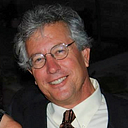An APUSH SAQ — The Louisiana Purchase
4 min readMar 19, 2021
Fifteen questions designed to help students review for the annual exam and that relate to Thomas Jefferson’s 1803 land deal

- Briefly describe a historical event, development, or process that occurred before the Louisiana Purchase.
- Following the Louisiana Purchase, the United States government sought to gain influence and control over North America and the Western Hemisphere through exploration. Name and briefly describe one specific piece of evidence in support of this claim.
- Following the Louisiana Purchase, the United States government sought to gain influence and control over North America and the Western Hemisphere through military actions. Name and briefly describe one piece of evidence in support of this claim.
- Following the Louisiana Purchase, the United States government sought to gain influence and control over North America and the Western Hemisphere through American Indian removal. Name and briefly describe one specific piece of evidence in support of this claim.
- Following the Louisiana Purchase, the United States government sought to gain influence and control over North America and the Western Hemisphere through diplomatic efforts. Name and briefly describe one piece of evidence in support of this claim.
- In geographical terms, how would you describe the territory acquired as a result of the Louisiana Purchase? What essentially was the eastern border of the territory? The western border? How far north and south did the territory stretch? Any major rivers associated with this territory? Mountain ranges? Also, part or all of how many states were eventually created from this land deal?
- Place the following in order of their occurrence: The acquisition of territory as a result of the Mexican-American War, the Spanish America War, the American Revolutionary War, the purchase of Alaska, the annexation of Hawaii, the Florida Cession, and the Treaty of Oregon. Then briefly describe one major similarity and one major difference between the Louisiana Purchase and the Mexican Cession.
- At the time of the Louisiana Purchase, the United States began to develop a modern democracy. Name and briefly describe one specific piece of evidence in support of this claim.
- At the time of the Louisiana Purchase and in the years thereafter, the United States celebrated a new national culture. Name and briefly describe one specific piece of evidence in support of this claim.
- Shortly after the purchase of the Louisiana Territory, entrepreneurs helped to create a market revolution in production and commerce, in which market relationships between producers and consumers came to prevail as the manufacture of goods became more organized. What was the market revolution?
- In 1803, the National Intelligencer newspaper reported that the Louisiana Purchase was “an event which history will record among the most splendid.” Name a group of people living in North America who would not agree with that assessment.
- The United States’ purchase of the Louisiana Territory gave rise to contests over the extension of slavery into new territories. Name and briefly describe one specific piece of evidence in support of this claim.
- As over-cultivation depleted arable land in the Southeast prior to the time of the Lousiana Purchase, slaveholders sought to relocate their plantations to more fertile lands west of the Appalachians. In the years following the Louisiana purchase, what did these plantation owners, more than anything, grow in this newly acquired territory?
- Name and briefly describe an innovation and/or technology that was developed in the years leading up to the purchase of the Louisiana Territory and that dramatically expanded agricultural production in the territory.
- Name and briefly describe an innovation and/or technology that was developed shortly after the purchase of the Lousiana Territory and that dramatically expanded the ability to travel throughout the territory.












